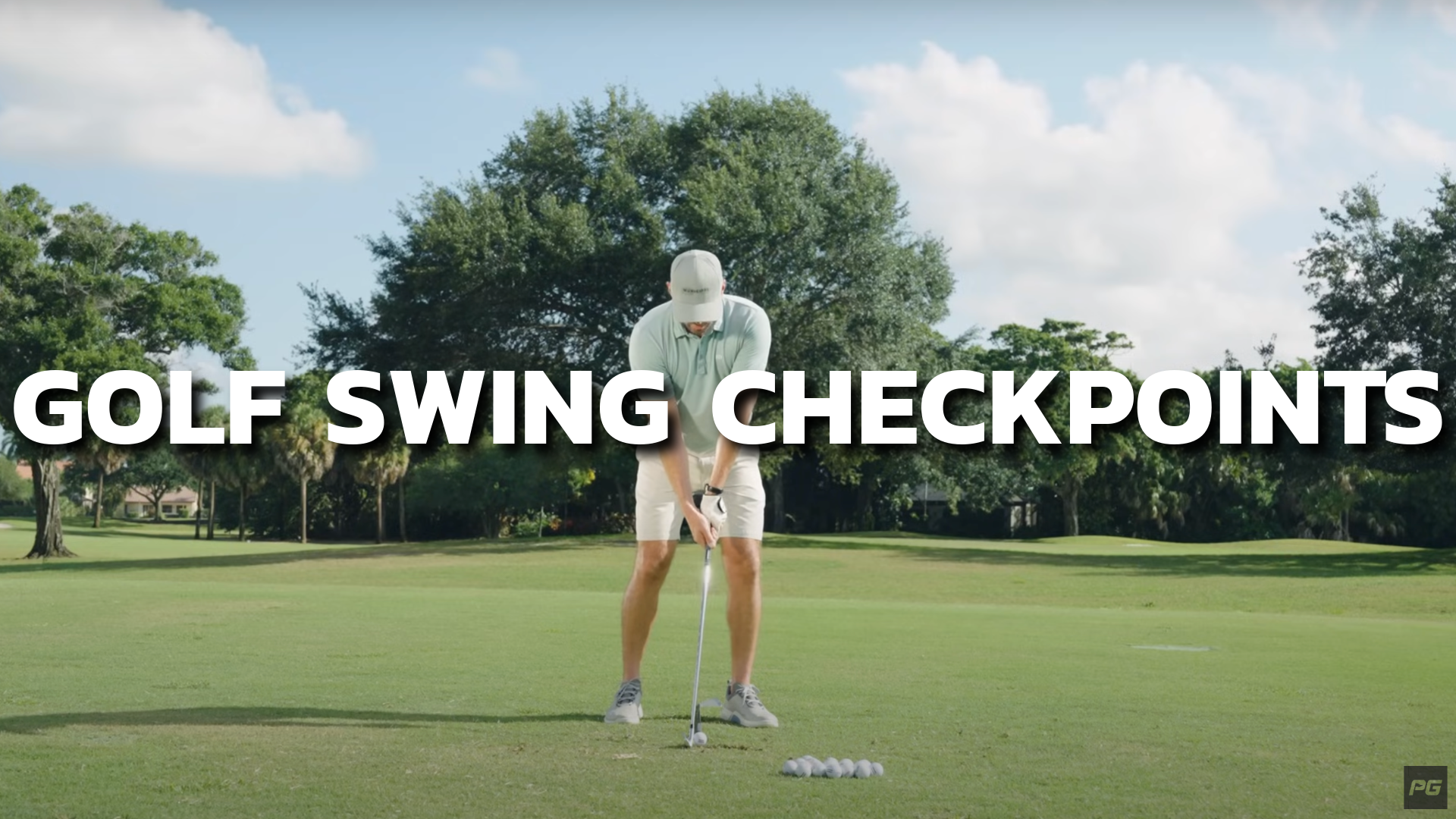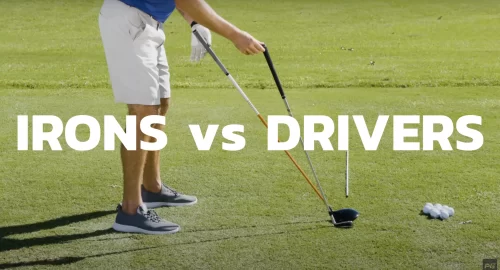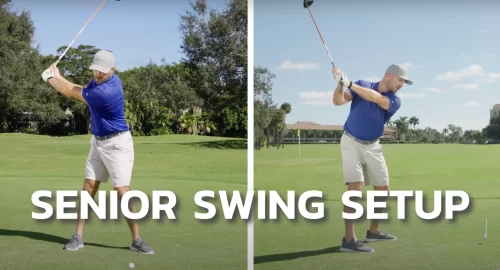
If you want to build a consistent, repeatable golf swing that you can feel confident in no matter the course, you need to focus on the fundamentals above all else.
Consistency is the holy grail of golf – every player seeks it (at every skill level). To have more consistent scores, it’s vital to improve your ball striking and contact. If you can hit the sweet spot more often, you will reduce blowup holes and make it significantly easier to lower your handicap.
The 5 Checkpoints for a Consistent Golf Swing
To develop a more consistent, repeatable swing, you’ll want to focus on these five key checkpoints. Think about these before, during, and after each hole to really focus and build your fundamentals.
1. The Setup
How you set up the golf ball determines so much of how the rest of your swing goes.
This is why the best golfers in the world are constantly checking their setup at the driving range. If you can set up on the golf ball properly, the rest of your swing happens much more naturally.
- Grip. Your hands on the grip play a pivotal role in the direction of your shot. Aim to get your hands in a neutral or slightly strong position so you can avoid a slice. This hand position will also make it easier to compress the ball for clean strikes (more on that in the fourth checkpoint).
- Alignment. The second part of a proper setup is getting aligned correctly at your intended target. You want your feet, hips, and shoulders to be parallel left of your target line. It’s a good idea to use alignment sticks in practice to ensure you don’t develop any bad alignment habits that can hurt your swing.
- Ball position. Lastly, make sure the ball position matches the club you’re hitting. The longer the club, the further the ball is from you in your stance.
A solid grip, good posture, and a stance that matches the club you’re hitting, means you’re set up well for the takeaway.
2. The Takeaway
If you can get the first checkpoint dialed in, it makes the takeaway happen much more naturally. The takeaway sets the stage and gets you on plane from the start of your swing.
The key is to avoid an inside takeaway that plagues most golfers. This leads to an open clubface, steep swing, and big misses.
- Clubface position. Once the club is parallel to the ground, make sure the face is square to your target. Avoid rolling the face open too early – which can be avoided with a strong enough grip.
- One piece takeaway. Your arms, shoulders, and hands need to move together for a consistent swing path. The lower body doesn’t do much during the takeaway – instead, focus on the upper body working together.
- Smooth tempo. Start by taking the club back smoothly and not rush, or it will throw off your timing.
If your takeaway needs help, learn more about The StraightAway from world-renowned swing coach David Leadbetter.
3. Top of the Backswing
The third checkpoint for a consistent swing is the top of your backswing. Focus on the following to ensure you’re ready to begin the downswing.
- Full shoulder turn. To maximize distance, you’ll want a full shoulder turn with your back facing the target. Try to get 90 degrees of should turn and if you need help with more rotation, try out these golf stretches.
- Hip rotation. Your hips should turn about half as much as your shoulders – roughly 45 degrees. This will help load your body for a powerful release on the downswing.
- Weight transfer. Your weight should be 25/75 (front to trail foot) and starting to go back toward your lead foot.
4. The Downswing
Next up is the downswing, which leads to the impact zone (known as the moment of truth).
If the clubface is open, you’ll hit a fade or slice. If the clubface is closed, you’ll hit a draw or hook. Paired with your swing path, the ball will start left, right, or directly at your intended target.
The impact zone is where all elite players have very strong fundamentals – despite having different grips, takeaways, and backswings. Here is what you’ll want to focus on during this crucial point of the swing.
- Hands ahead of the golf ball. This is known as forward shaft lean and a key checkpoint of solid ball strikers. At impact, your hands should be slightly ahead of the ball to ensure a downward strike. This will lead to compressing the ball for maximum distance and a divot that is ahead of the ball (not behind it like most amateurs).
- Hip rotation. Your hips should be open toward the target and lead your upper body. The proper hip rotation will make it easier to transfer your weight to your lead foot and a solid strike. A lot of amateur golfers tend to leave their weight back and not compress the ball.
- Square clubface. Finally, you want the face square to the target line at impact to produce accurate shots.
Watch this video to learn more about starting your downswing correctly, so the rest is a breeze!
5. The Follow Through
The final checkpoint to evaluate your golf swing is your finished position. Here’s what to look for as you finish the swing.
- Balanced finish. You want to make sure you’re balanced on both feet, with your weight on your lead foot. If you have “happy feet,” chances are you had too much lower body movement, incorrect tempo, or tried to swing too hard.
- Full rotation. Your chest should be facing toward the target, which ensures your weight is transferred and fully rotated.
- High hands. Finally, your hands should be in a high position which shows you swung through the ball.
Next Steps for a Consistent Golf Swing
Now that you have a clear understanding of the five key checkpoints, it’s time to evaluate your golf swing. Start by recording your golf swing and seeing how you’re doing at each of these five areas.
If you need help understanding your swing, make sure to check out SwingFix AI. Using AI and the Performance Golf App, you can upload a video of your swing and get immediate feedback. We’ll provide you with tips and drills to address the biggest areas of your swing to improve fast.
Keep practicing, and you’ll be able to lower your handicap in no time!

